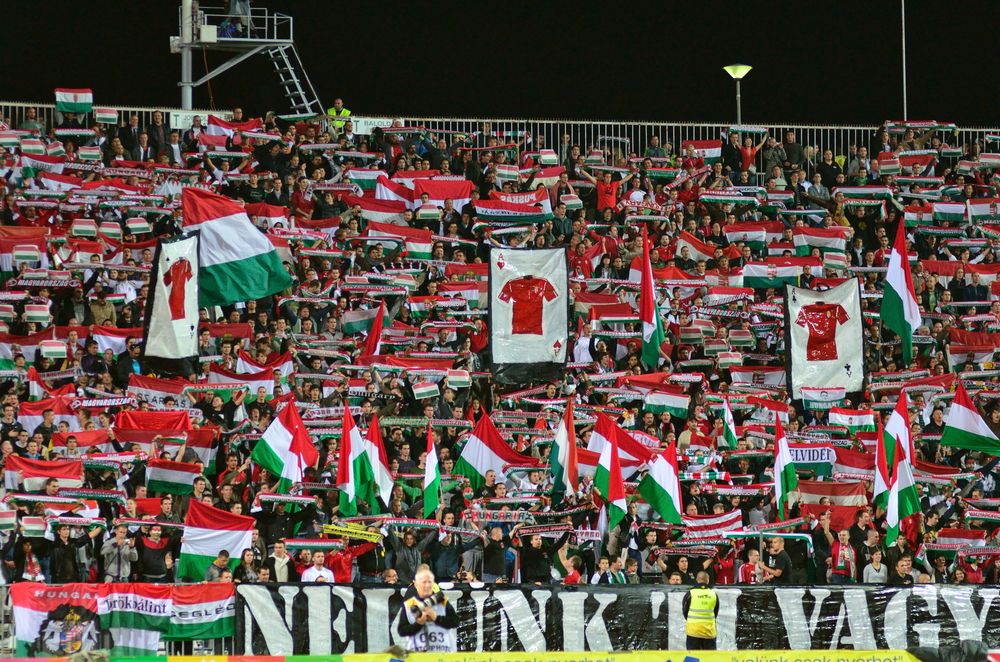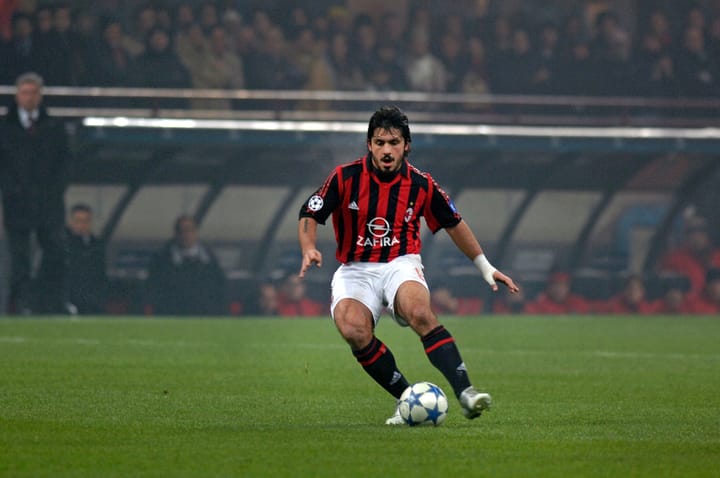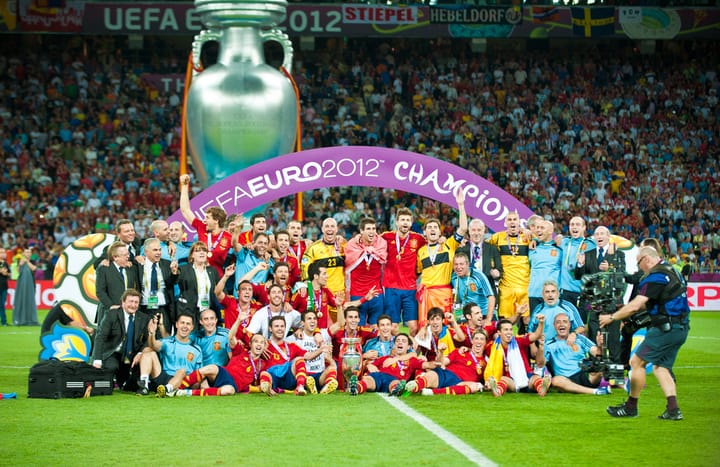The Magical Magyars: A Golden Era in Hungarian Soccer
In the history of soccer, few teams have garnered the mystique and admiration that the "Magical Magyars" command. In this article, we walk through their legendary moments.

In the history of soccer, few teams have garnered the mystique and admiration that Hungary's national team, known as the "Magical Magyars," commands. From the mid-1940s to the mid-1960s, this golden generation of players took the beautiful game to new heights, revolutionizing soccer with their innovative tactics and breathtaking performances.
This article delves into the captivating journey of the Magical Magyars, their rise to the zenith of soccer glory, the astonishing achievements they secured, and the legacy they left behind.
The Hungarian national soccer team had its golden era from the mid-1940s to the mid-1960s. This period is marked by some of the team's most significant achievements and the performances of several legendary players.
In 1945, after World War II, the Hungary team started to rise as a significant force in global soccer. The team was led by coach Gusztáv Sebes, who created the Magical Magyars (Aranycsapat in Hungarian), one of the most dominant teams in soccer history.
The Magical Magyars featured players such as Ferenc Puskás, Sándor Kocsis, Zoltán Czibor, József Bozsik, and Gyula Grosics, all of whom were regarded as some of the best players of their era and beyond. Ferenc Puskás, in particular, is often considered one of the greatest players in soccer history.
1952 Olympic Games in Helsinki
The 1952 Summer Olympics were held in Helsinki, Finland. The Hungarian soccer team put on an impressive performance in the tournament, ultimately winning the gold medal and cementing their status as one of the world's best teams.
The team was made up of several of the players who would go on to form the core of the "Magical Magyars" team, such as Ferenc Puskás, Zoltán Czibor, Sándor Kocsis, József Bozsik, and Gyula Grosics. The head coach was Gusztáv Sebes, who would also coach the team during their famous 1953 victory over England at Wembley and their journey to the 1954 World Cup final.
The Hungarian team's dominance in the 1952 Olympic tournament is reflected in the scorelines. In their first match, they defeated Romania 2-1. They then proceeded to defeat Italy 3-0 in the quarterfinals. The semifinals saw a staggering 6-0 victory over Sweden, who were the winners of the 1948 Olympics, which set the stage for the final.
In the final, Hungary faced Yugoslavia. It was a tough match, but Hungary came out on top with a 2-0 victory, with both goals coming from Puskás and Czibor. This victory secured Hungary's gold medal and helped to further establish their reputation as a soccer powerhouse.
Ferenc Puskás, with his brilliant dribbling and shooting skills, was the standout player of the tournament, but the entire team played a brand of fast, attacking soccer that was revolutionary at the time. Their style of play influenced the tactical development of the game and paved the way for total soccer.
Overall, the 1952 Olympics represented a high point in Hungarian soccer history and were a significant part of the team's golden era.
1953: Match of the Century
The match between Hungary and England at Wembley Stadium on November 25, 1953, is often referred to as the "Match of the Century". The game was significant because it marked a departure from traditional styles of play and demonstrated the innovative tactics of the Hungarian team, who were later dubbed the "Magical Magyars".
Coming into the match, England had never been beaten on home soil by a team outside the British Isles. England was considered one of the powerhouses of soccer, and their fortress, Wembley Stadium, was seen as impregnable. But Hungary, with their revolutionary new tactics and gifted players, were about to change all that.
Hungary took the lead after just 45 seconds through Nándor Hidegkuti, and by the 27th minute, they were 3-1 up, with a goal from Ferenc Puskás and another from Hidegkuti. England managed to pull one back before halftime with Stanley Matthews assisting Billy Wright. However, the second half saw the Magical Magyars score three more times, with Hidegkuti completing his hat-trick, ad Puskás and József Bozsik also scoring. England managed to score twice in the second half, but it was not enough, and the game ended in a 6-3 victory for Hungary.
The game is perhaps most famous for Puskás' second goal, where he dragged the ball back with the sole of his boot to beat England defender Billy Wright, a move that had never been seen before in England.
This victory over England at Wembley was a massive shock to the English game, proving that their style of soccer was outdated and could be overcome. The loss led to significant tactical changes in English soccer, with more emphasis placed on skill and less on physicality.
The "Match of the Century" is still remembered as one of the greatest and most influential games in soccer history, marking the rise of the Magical Magyars and the revolution in soccer tactics that they represented.
1954: World Cup
The Hungarian national soccer team entered the 1954 FIFA World Cup in Switzerland as one of the favorites.
They played their first match against South Korea, securing a massive 9-0 victory with Sándor Kocsis scoring a hat-trick. They faced Germany in their next match and won 8-3; Kocsis again netted four goals, and Puskás scored two.
In the quarterfinals, Hungary faced Brazil in what is now known as the Battle of Berne due to its physicality and violence both on and off the pitch. Although Hungary prevailed 4-2, there were fights between the players, and there were even altercations in the locker rooms after the game.
In the semi-finals, Hungary faced the defending champions, Uruguay. It was a tightly contested match, and Hungary took a 2-0 lead only for Uruguay to equalize and take the game to extra time. In extra time, Hungary scored twice, and the match ended 4-2, sending Hungary to the final.
The final, held on July 4, 1954, is known as the "Miracle of Bern." Hungary faced West Germany, a team they had easily defeated 8-3 in the group stages. Hungary took a 2-0 lead early in the match, but West Germany fought back to equalize. Tragedy struck for Hungary as Ferenc Puskás, who was playing with an injury, had a goal disallowed for offside. Near the end of the match, West Germany's Helmut Rahn scored the winning goal, and West Germany won 3-2.
The loss in the final was a massive disappointment for Hungary. The team, widely considered the best in the world at that time, failed to win what many thought would be a crowning achievement for this golden generation of players.
After 1956, due to the Hungarian Revolution, many key players of the Magical Magyars left the country and went on to play for various clubs outside Hungary. Puskás, Kocsis, and Czibor notably went on to play for Spanish clubs.
Despite this, the Hungarian team managed to reach the quarterfinals of the 1962 and 1964 European Championships and the 1966 World Cup. However, they couldn't achieve the same level of success as they had in the first half of the 1950s.




